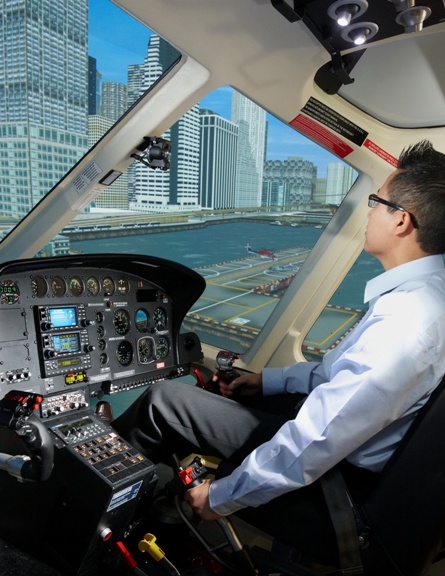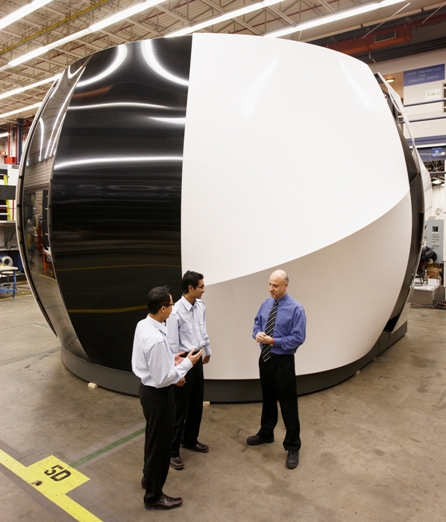A 5 February accident that claimed the lives of two paramedics and the pilot of a Eurocopter AS350B2 taking part in a night training exercise near El Paso in Texas was not a unique event when considering the accident statistics of the broader civil helicopter sector.
Claude Lauzon, vice-president of civil aviation services for simulator provider CAE, says almost 25% of all civil helicopter accidents occur during practice, training that, ironically, is designed to boost safety. "A high percentage of training still takes place in the real aircraft," says Lauzon. "This to us is unacceptable."
CAE is responding to the quandary with a new line of simulators, designed in part to introduce safety enhancing scenario-style training while removing via technology the cost barriers that have prevented corporate, emergency medical services, offshore operators and others in the past from being able to use the devices. CAE says the new helicopter mission simulators will meet or exceed current regulatory requirements, including US Federal Aviation Administration (FAA) and European Joint Aviation Authorities (JAA) Level D or other levels according to customer training needs.
 |
|---|
©CAE |
Developed in part from full immersion technology created for US military special forces, the 3000 Series features a CAE Tropos-6000 visual system with 220° horizontal by 80° vertical field of view presented on a direct projection dome that includes chin windows.
Along with a three degree-of-freedom vibration platform and the ability to simulate night vision goggles and forward-looking infrared, the 3000 series provides high-definition features such as animation of rotor downwash and recirculation effects, high-density urban environments, moving objects and artificial intelligence inputs for people in the scenarios, a first for the civil helicopter simulators. The system can also be purchased with a six degree-of-freedom full-motion base.
 |
|---|
©CAE |
"What we all learned in the last couple of years is that there's definitely a gap in scenario training for operators," says Lauzon.
His insight is gained from a helicopter advisory board that CAE assembled from its helicopter industry customers, including pilots, operators, manufacturers and insurers.
CAE to date has delivered more than 100 simulators for nine different helicopter manufacturers, including AgustaWestland, Bell, Eurocopter, MD Helicopters and Sikorsky, primarily for larger twin-turbine models.
Not surprisingly, cost has been the "main barrier" preventing more lower-end operators from using simulators, says Lauzon. "The customer is looking at operating cost as the litmus test," he says, adding that the general sense of the community is that training costs must be "similar" to operating costs.
Lauzon says training in a 3000 Series simulator will not only cost less than training in a turbine-powered helicopter, but it will also extend the service availability of aircraft fleets and free fleet aircraft for revenue-generating operations.
Source: Flight International
















